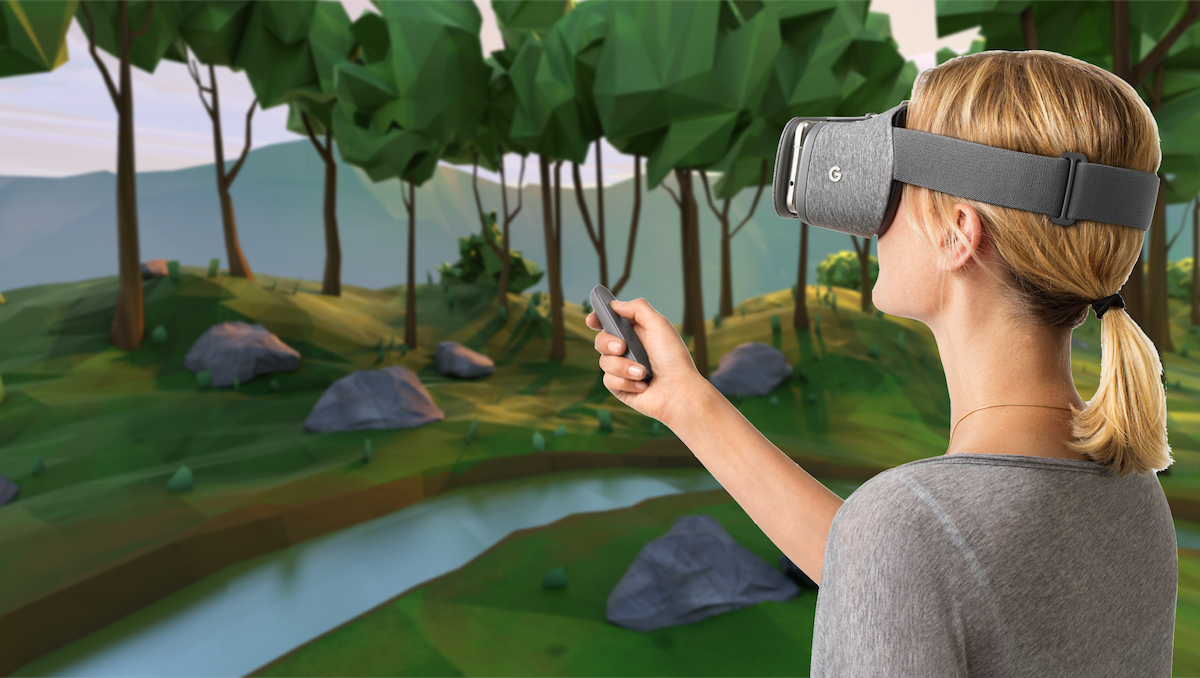
- 2 Min Read / Blog / 3.2.2020

Alongside its other improvements and new features, with Android Nougat Google introduced the first version of a virtual reality platform built on top of Android called Daydream. Android Daydream is a suite of APIs that can power virtual reality experiences within the Android ecosystem, seeking to standardize the myriad VR products and services that have cropped up from HTC, Samsung, and others in recent years.
Daydream allows Android developers to build powerful virtual reality experiences on the platform, and streamlines the development of immersive virtual worlds for the best Android apps. For VR hardware, rather than requiring an expensive computer rig with a specialized headset like Oculus, Daydream is designed to work with Android smartphones meeting certain specifications. Because of this accessibility, and because it’s built upon the most popular operating system in the world, Android Daydream is well positioned to define what the next big computing platform looks like with virtual reality.
Android Daydream is well positioned to define what the next big computing platform looks like: virtual reality.
With Android Nougat, compatible smartphones can enter a VR Mode that prioritizes graphics performance and takes care of many of the challenges of virtual reality—namely head-tracking, stereoscopic vision, and image latency. As the spiritual successor to Google’s Cardboard SDK, Daydream is intended to make developing Android-specific virtual reality experiences seamless and efficient for Android developers.
But we’ve seen this before. Every few years a new computing platform emerges that is said to redefine everything, to completely transform how we use mobile devices and how we interact with technology (ahem, wearables). Why is virtual reality any different? It certainly remains to be seen how prevalent the technology becomes, but VR in and of itself is an entirely new way to think about personal computing, and turns many of the long-held assumptions about how users engage with interfaces on their head—literally.
Virtual reality itself is an exciting prospect, but perhaps more exciting is how Google is bringing its solution to market. Because the company has a long history of partnering with smartphone OEMs to bring top-of-the-line Android user experiences to the masses, it’s prescribing a strict set of guidelines for devices that can support Android Daydream called the Android Compatibility Definition Document.
These benchmarks set requirements for the most powerful Android devices, in the hopes that more of them will meet the specifications to power an Android Daydream headset. AMOLED displays above a certain resolution, mobile systems-on-chips above a certain level of performance, and more requirements help to ensure that high-end Android smartphones are up to the task of displaying the 3D graphics necessary to simulate a virtual world.
The halo effect of these Android device specifications is a degree of standardization across the Android hardware industry.
For a platform that prides itself on diversity, it might seem counterintuitive that Google would prescribe such high benchmarks for performance, and such staunch guidelines about how Daydream–compatible headsets can be designed. But the halo effect of these Android device specifications is a degree of standardization across the Android hardware industry, a trend that will only benefit end users and developers. As Android smartphone manufacturers adapt their product offerings to support these new Daydream specs, it will be easier over time to assume that users have a smartphone capable of high graphics performance.
The first and most obvious application of virtual reality technology is gaming, and Android Daydream is sure to power some high-performance games that succeed in transporting VR headset wearers to other worlds. Beyond that, the next most obvious examples are other forms of entertainment, like video streaming services or live concerts. But for the bulk of Android app developers, whose products or services are more focused on productivity or commerce than entertainment, how does the Daydream world make sense?
Traditional user interfaces simply don’t make sense in virtual reality, but that doesn’t stop developers from trying.
Many developers have begun adapting their Android app user interfaces for virtual reality, and assumed that the user’s head tracking could serve as a virtual cursor. Point your face up to hover over an item above your field of view. Tap on the remote to select. It’s a sloppy translation, as traditional user interfaces simply don’t make intuitive sense in a VR context, but it’s among the first of many experiments that will help to define the UX best practices that virtual reality developers will come to standardize.
For now, it’s worth considering how even traditional Android user experiences could make the jump to VR. Perhaps an ecommerce fashion app could empower users to try on their clothes in a virtual dressing room. Maybe travel apps could give virtual sightseeing tours, or hotel apps could offer 3D models of their rooms before reserving. Many of the ideas for VR experiences are strained today, but as the technology matures and becomes a larger part of many users’ lives, it promises to become expected.
Many ideas for VR versions of existing apps are strained, but as the technology becomes more ubiquitous, they’ll begin to be expected.
There are many directions that the next phase of mobile user experiences could take us, and virtual reality is perhaps the most extreme among those that technology companies are exploring today. And while the mobile user experience that defines 2026 might be drastically different than any that current technology companies have envisioned, it will almost certainly continue the trend of removing software barriers between users and their content. If virtual reality is a first stab in this direction, then it’s worth immersing ourselves in.